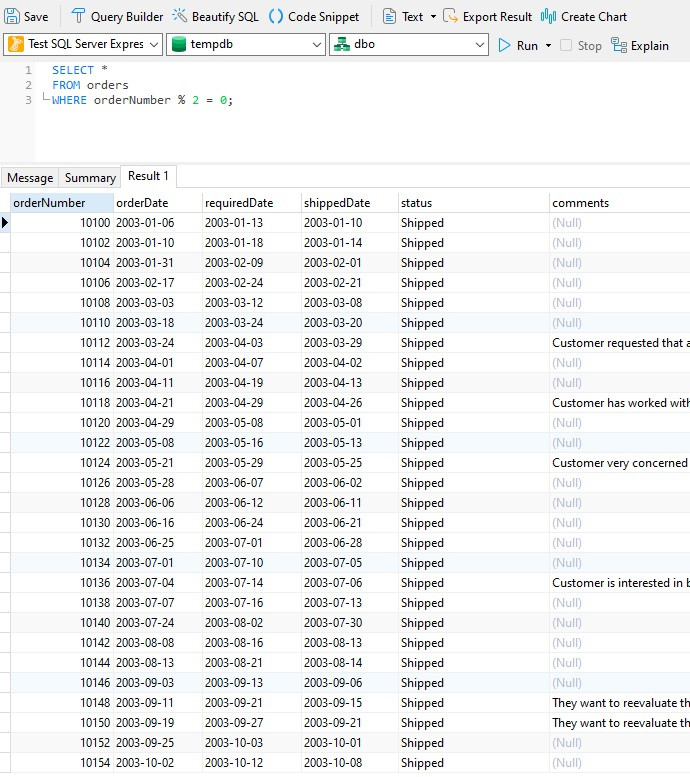Sometimes, you might need to retrieve specific rows from a SQL Server database based on whether a certain column’s value is odd or even. While it might seem like an uncommon task, filtering data based on odd or even numbers can be quite useful in various scenarios, such as data analysis, reporting, or even application logic. This article will guide you through effectively selecting odd numbered rows in SQL Server, providing clear examples and explanations.
Understanding the Modulo Operator for Odd Number Selection
The key to identifying odd and even numbers in SQL Server lies in the modulo operator, represented by the percentage symbol %. This operator calculates the remainder of a division. When you divide an integer by 2, a remainder of 0 indicates an even number, while a remainder of 1 signifies an odd number. SQL Server utilizes this operator to facilitate the selection of odd or even rows based on a numeric column.
SQL Server Syntax for Selecting Odd Rows
To select rows where a specific column contains odd numbers in SQL Server, you’ll use the % operator within your WHERE clause. Here’s the general syntax:
SELECT *
FROM table_name
WHERE column_name % 2 = 1;In this syntax:
SELECT *retrieves all columns from your table. You can specify particular columns if needed.FROM table_nameindicates the table you are querying. Replacetable_namewith the actual name of your table.WHERE column_name % 2 = 1is the filtering condition. It checks if the remainder ofcolumn_namedivided by 2 is equal to 1. If it is, the row is considered to have an odd value incolumn_nameand will be included in the result set. For even numbers, you would change the condition toWHERE column_name % 2 = 0.
Practical Examples Using the orders Table
Let’s illustrate this with the orders table from the classicmodels sample database, a commonly used database for learning and practicing SQL. Assume this table has an orderNumber column, which, while not auto-incrementing, is sequentially ordered and serves as a good candidate for demonstrating odd/even row selection.
First, let’s visualize the table design to understand the orderNumber column.
 orders_table_design (17K)
orders_table_design (17K)
As observed, orderNumber is an integer column. Now, let’s see how to select odd numbered rows based on orderNumber.
To retrieve orders with odd orderNumber values, you would execute the following SQL Server query:
SELECT *
FROM orders
WHERE orderNumber % 2 = 1;This query will return all columns for rows in the orders table where the orderNumber is odd.
Let’s look at a visual representation of selecting odd rows from the orders table.
 odd_rows_in_sql_server (211K)
odd_rows_in_sql_server (211K)
Similarly, to select even numbered rows, you would simply adjust the WHERE clause to check for a remainder of 0:
SELECT *
FROM orders
WHERE orderNumber % 2 = 0;And here’s the result of selecting even rows:
 even_rows_in_sql_server (215K)
even_rows_in_sql_server (215K)
Conclusion
Selecting odd or even numbered rows in SQL Server is straightforward using the modulo operator %. This technique provides a simple yet powerful way to filter data based on numerical parity. Whether you need to analyze subsets of your data, create specific reports, or implement conditional logic in your applications, understanding how to select odd and even rows is a valuable SQL skill. By using the modulo operator and the appropriate WHERE clause, you can efficiently retrieve the exact data you need from your SQL Server databases.
